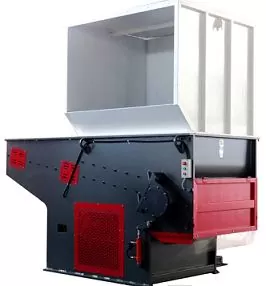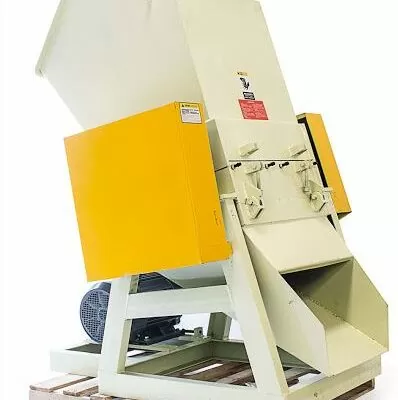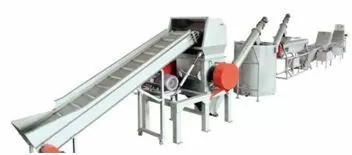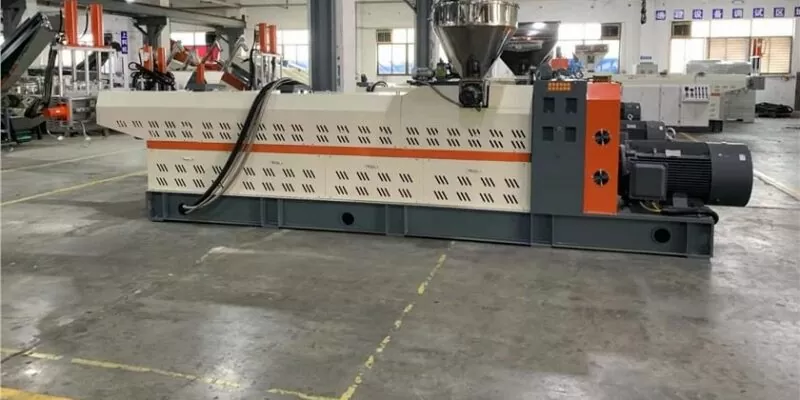I used to struggle with turning raw plastic into useful products. Every day, I faced waste, inefficiency, and frustration. I knew there had to be a better way. At Amige, I discovered that plastic extrusion is the key. The challenge was real, but so was the breakthrough. I wanted to revolutionize production, reduce waste, and create quality products. That’s when I dove deep into plastic extrusion. It changed everything for me and my business, transforming raw resin into consistent, valuable shapes.
A plastic extrusion machine melts and shapes raw plastic into endless profiles. It works by pushing heated material through a mold, producing continuous forms like pipes, films, and sheets. This efficient process saves time and energy while boosting production. I learned that with the right machine, you can achieve high quality and versatility in manufacturing. It’s truly the heart of modern plastic processing.
Curiosity keeps you reading. I promise you a deep dive into this transformative technology. Let’s explore the ins and outs of plastic extrusion together.

How does a plastic extrusion machine work?
I often compare plastic extrusion to making fresh pasta. You begin with raw plastic pellets. These pellets are fed into the machine’s barrel. A rotating screw then pushes the material forward. Heat is applied gradually, turning the solid plastic into a molten state. The molten plastic then flows into a die. The die shapes the plastic into a continuous profile—whether it be a tube, sheet, or any customized form. After exiting the die, the plastic is cooled, solidifying its new shape.
The process is both art and science. Temperature, pressure, and speed must be carefully controlled. At Amige, we use state-of-the-art sensors to monitor every phase. Every step affects the quality of the final product. It’s all about precision and consistency.
What types of plastic extrusion machines exist?
There are several types, each designed for specific tasks.
- Single-screw extruders are common. They are simple and robust. Ideal for general thermoplastics.
- Twin-screw extruders offer improved mixing and are great for composite materials. They’re perfect for complex applications.
- Co-extrusion machines can combine multiple layers of plastic. They create products with varied properties. For instance, layered pipes or films.
Each machine type has its advantages. My choice depends on the product and material. I’ve seen firsthand how the right machine improves efficiency and quality. We always evaluate client needs before recommending a solution.
What materials are used in plastic extrusion?
Plastic extrusion isn’t limited to one type of plastic. I’ve worked with many.
- Polyethylene (PE) is widely used for films and pipes. It’s versatile.
- Polypropylene (PP) offers excellent chemical resistance. It’s great for containers and automotive parts.
- PVC is another favorite. It’s durable and resistant to weather.
- ABS is valued for its strength and smooth finish, used in electronics and toys.
Every material has a unique melting point and viscosity. Our machines are tailored to handle these differences. This customization is critical. It ensures that every product meets high standards.

What are the benefits of plastic extrusion?
I’m passionate about the benefits. The process is efficient and continuous. This efficiency translates to lower costs and higher productivity.
- Continuous production means less downtime compared to batch processing.
- Consistency is key; every product is nearly identical.
- Versatility allows for a wide range of shapes and sizes.
Energy usage is optimized. With precise controls, waste is minimized. I recall the early days when production was erratic and inefficient. Now, every run is a seamless operation. The result is high-quality, durable products that meet demanding specifications.
What common problems occur in plastic extrusion?
Even the best machines can face issues. I’ve encountered challenges that taught me valuable lessons.
- Inconsistent flow can lead to uneven products. This is usually due to temperature fluctuations.
- Die swell may occur when the extruded material expands unexpectedly.
- Color inconsistencies are common with improper mixing.
- Blockages can happen if the feed material isn’t uniform.
I approach each problem systematically. Diagnostics tools and regular maintenance are crucial. At Amige, we constantly monitor our machines. We adjust settings to avoid issues before they become costly.
How do I choose the right plastic extrusion machine?
Choosing the right machine is a strategic decision. It’s not a one-size-fits-all. I always consider several factors.
- Material compatibility: Ensure the machine supports the plastic type.
- Production volume: High output demands robust machinery.
- Product complexity: Intricate shapes require precise dies.
- Energy efficiency: Look for machines with modern energy-saving features.
- After-sales service: Reliable support is non-negotiable.
I advise clients to review these factors carefully. Investing in the right machine is crucial for long-term success. Our team at Amige provides personalized consultations to help you decide.

What innovations are shaping the future of plastic extrusion?
Innovation never stops. I am excited about the advances we see.
- Automation is transforming how we monitor and control extrusion processes.
- Smart sensors and IoT integration make real-time adjustments possible.
- Sustainable practices: Recycling and energy recovery systems are becoming standard.
- Custom die technology is evolving to support increasingly complex profiles.
At Amige, we invest in research and development. We continuously upgrade our machinery. I believe that innovation drives better quality and sustainability. Our efforts are documented in our internal reports.
What role does maintenance play in extrusion operations?
Maintenance is the lifeblood of any extrusion operation. I emphasize preventive maintenance over reactive fixes.
- Regular checks on temperature controls and screw integrity are vital.
- Scheduled downtime for servicing prevents unexpected breakdowns.
- Cleaning the barrel and die regularly avoids clogs and contamination.
In my experience, a well-maintained machine outperforms a neglected one by leaps and bounds. We at Amige maintain a rigorous maintenance schedule. This commitment minimizes disruptions and maximizes production.

How does plastic extrusion impact sustainability?
Sustainability is a growing concern in manufacturing. I’m proud to say that plastic extrusion can be green.
- Energy efficiency: Continuous processes consume less energy per unit produced.
- Material recycling: Scrap and off-cuts are re-melted and reused.
- Reduced waste: Precise controls lead to fewer rejects.
- Innovative recycling systems: Some extruders are designed to handle recycled materials exclusively.
At Amige, we champion sustainable practices. Our processes are constantly refined to reduce our carbon footprint. I see a future where extrusion not only supports production but also environmental stewardship.
How do I integrate quality control in extrusion?
Quality control is non-negotiable in our business. I’ve learned that consistency is key to customer satisfaction.
- In-line sensors monitor temperature, pressure, and flow continuously.
- Automated inspection systems catch defects as they happen.
- Statistical process control (SPC) ensures that every batch meets rigorous standards.
I invest in quality control technology because it saves money and enhances reputation. Every product that leaves our facility reflects our commitment to excellence. Our quality control measures are among the best in the industry.
How do I train my team on extrusion technology?
A skilled team is essential. I always stress training and development.
- Hands-on workshops give technicians practical experience.
- Regular seminars keep the crew updated on new technologies.
- Certification programs validate expertise and build confidence.
Conclusion
Plastic extrusion machines are transformative. They turn raw resin into uniform, high-quality products. The right machine and a dedicated team create efficiency, sustainability, and innovation in production.
